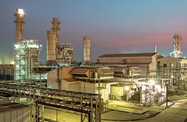A return to economic growth in Thailand is expected to drive greater demand for electricity, hastening efforts to look for alternative sources of energy, although continued political uncertainty could slow public investments in power plants and transmission lines.
On February 2, the governor of the Electricity Generating Authority of Thailand (EGAT), Soonchai Kumnoonsate, said electricity demand was forecast to rise by 4% this year to 180bn KWh, as economic activity regains momentum.
Thailand has an installed capacity of around 31,500 MW, of which EGAT accounts for about half, with independent power producers (IPPs), small power producers and imports making up the balance.
While the country has sufficient capacity to meet this year’s expected rise in demand, planned disruptions to gas supplies in April and June due to pipeline maintenance could present some short-term challenges.
“We might have to import more hydroelectric power from Laos and promote more energy efficiency to reduce electricity consumption and minimise the impacts of higher fuel tariffs on electricity bills during the supply disruptions,” Soonchai said.
EGAT and IPPs are expected to turn to more expensive fuel oil and diesel as substitutes during the period of limited gas supplies, pushing up costs, which could be passed on to consumers.
Looking for alternatives
While domestic natural gas accounts for the majority of power generated today, authorities have started to look for alternatives in response to dwindling resources. Proven reserves fell 10% in 2013 to reach 9.04trn cu feet, the first decline in more than three decades, and Thailand has been importing liquefied natural gas (LNG) since 2011.
The Ministry of Energy has acknowledged the need to develop more fuel sources, with the department’s permanent undersecretary Suthep Liumsirijarern telling Reuters in mid-January that LNG was two to three times more expensive than domestic gas.
Expanding the use of renewable energy sources is one option. Last July the Ministry of Energy said it was aiming to boost renewables’ capacity to nearly 14,000 MW by 2021. This includes 3000 MW from solar, 4800 MW from biomass, 3600 MW from biogas and 1800 MW from wind, with the balance to come from hydropower and waste.
Thailand has been particularly active in the development of solar resources. It was one of the first Asian countries to institute an adder, a special tariff over and above the market rate for solar power purchased by a utility. A number of solar projects have come on-line in recent years, with installed capacity now standing at more than 125 MW.
Possible disconnect for funding flow
At the same time the government is exploring the use of alternative fuels. EGAT has a number of infrastructure expansion projects in the works, although the recent political uncertainty has called some of these investments into question. The authority has said shorter-term developments will be unaffected, as most of its current projects already have funding and approval locked in, but the medium-term outlook is clouded.
There have been concerns that the February 2 general election, which was boycotted by opposition blocks, may have to be re-run. If this is the case, it will mean a continuation in office of a caretaker government, which is not in a position to make major policy decisions.
Delays in the formation of a new government could mean EGAT’s plan to raise capital through the sale of an infrastructure fund may be postponed. The authority has said it is looking to raise more than $500m through a fund IPO, which was originally scheduled for July and for which Siam Commercial Bank has been lined up to act as an advisor. The money will be to finance the construction of new generation capacity and transmission lines.
Follow Oxford Business Group on Facebook, Google+ and Twitter for all the latest Economic News Updates. Or register to receive updates via email.

